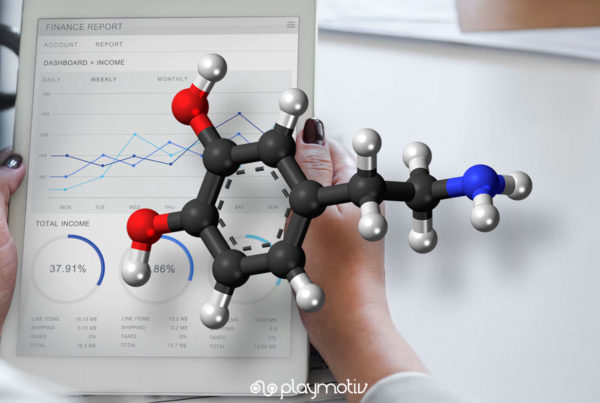Motivational dynamics and incentives: it is not about fair wages only
Non-monetary incentives are closely related to motivation, which is defined as an emotional drive that makes people to carry out tasks and projects. This motivation can be intrinsic (when it arises from within the individual) or extrinsic (when it arises from outside the individual).
For example, wage is the most important extrinsic motivational driver in the professional environment. Fair wages in line with staff’s abilities and the value that they generate are essential to motivate employees and maintain their commitment with the company. This is the reason why wages must be checked in the first place when teams show work demotivation signs.
It is important to note that economic incentives related to results do not correspond to wage increase. This solution can successfully improve teams’ motivation in some cases, however, it is not the most effective method, especially in the long term. These occasional economic incentives do not address the root causes of work demotivation, they just cover its consequences. In some cases, work demotivation is related with the lack of employees’ well-being. For instance, this happens when staff cannot balance work and family life, but demotivation can also be caused by anxiety or exhaustion due to poor organization, overload of work, or even poor relationships with other co-workers. And this is why having a good employee motivation plan that shows in detail the specific needs and lacks of teams and employees is so important.
Immaterial rewards in accordance with employees’ emotional needs can also be an excellent way of intrinsic motivation with a positive impact on their work motivation. We are talking about what is known as emotional salary: all the non-economic compensations that are granted to employees to improve their life quality. An appropriate emotional salary, based on non-monetary work incentives, will not only improve teams’ motivation in the long term and strengthen their engagement with the company, but it will also attract and retain talent.
Successful non-monetary incentives
Non-monetary incentives have been successfully used by many large companies for some time now in order to motivate their employees. This consists of satisfying other employee needs, putting wages to one side, through actions designed for that purpose.
Recognition incentives
Some examples to acknowledge well-done job in a public and fair way can be sending a public e-mail to an employee or a team to congratulate them for their results. It is also very effective using gamification to create a performance ranking where employees can see and compare their results. Mars Iberia used Playmotiv’s gamifications to publicly acknowledge the efforts and results of their teams through rankings and personalised e-mails. This way, the company has increased sales up to 11%. If you want to know more about this successful story, please check our case studies.
Training incentives
These incentives do not only benefit employees, but they also benefit companies because they can take advantage of the practical knowledge acquired by their employees. For example, in 2016, the Spanish multinational company Indra has created a corporate university, the Indra Open University, which offers employees the change to keep learning autonomously through a powerful digital platform.
Flexibility incentives
Working from home one day per week or having flexible schedules so employees can optimise their time at their sole discretion are the most effective incentives nowadays. The trust and confidence that companies place in their teams improve their motivation, engagement, and sense of responsibility. For instance, half of Motorola’s workforce (we are talking about 21.000 employees) work from home, and Netflix offers unlimited holidays and completely flexible schedules, so employees decide when to work and when to rest. This initiative was introduced in 2004 and it seems to be effective: the company increased exponentially its market value since then.
Time incentives
Giving one day off to the team after finishing a demanding project will improve staff morale at a reasonable cost to the company. The employees of the multinational toy company Mattel have 16 paid hours in order to attend the school activities of their children. And Facebook offers four months of paid holidays to its employees after becoming parents.
Additional incentives
Some companies offer childcare services, medical insurances, gym memberships, free healthy food, or even massages to their employees as incentives to improve their motivation. For example, Google offers free food to employees every day, and Cisco counts with two nurseries within its facilities. Besides, Evernote covers home-cleaning costs of employees twice per month, and Airbnb offers 2000$ per year to travel around the world.
Leisure incentives
Having fun outside the professional environment helps employees to know better each other and fosters teams’ cohesion. We are not only talking about organising leisure activities such as barbecues, cultural trips, sports events, or dinners. Setting a leisure space up at the office with some games (for example, table tennis, or table football) can help to smooth things over and improve relationships between team members. Apple organises its bi-annual Beer Bash, a company party with music and concerts exclusively for employees, where well-known artists take part (Maroon 5, or Demi Lovato) and participants enjoy free beer and food. It might be difficult hiring Maroon 5 to play in your party, but you can organise a concert with your employees. It is a great idea, right?
Anyway, the most important thing before choosing the right non-monetary incentives for employees is listening to them carefully, knowing what they really need, and offering them the most suitable solutions for their specific needs.
If you want to know more about motivation strategies, do not hesitate to read “How to develop a successful employee motivation strategy”.


